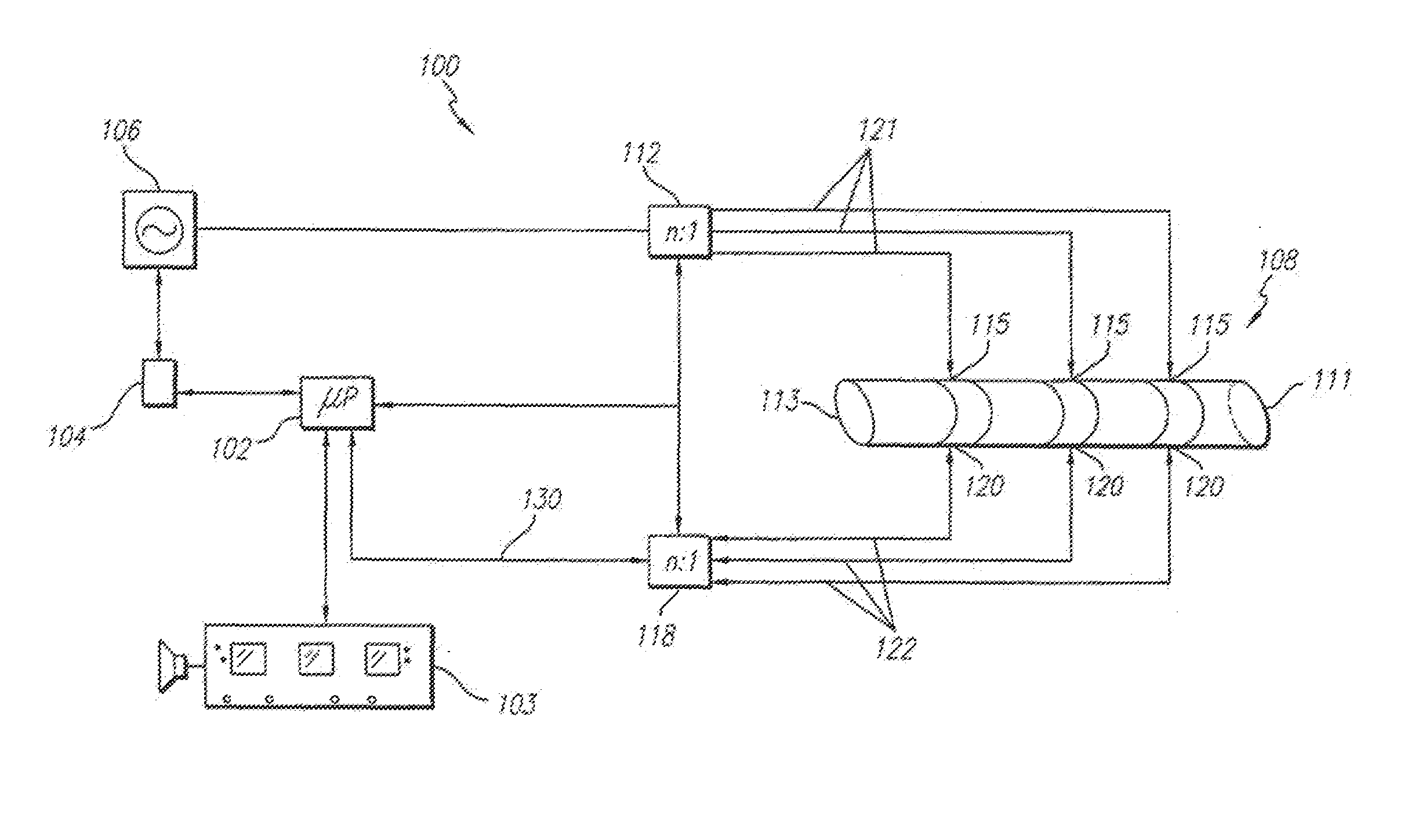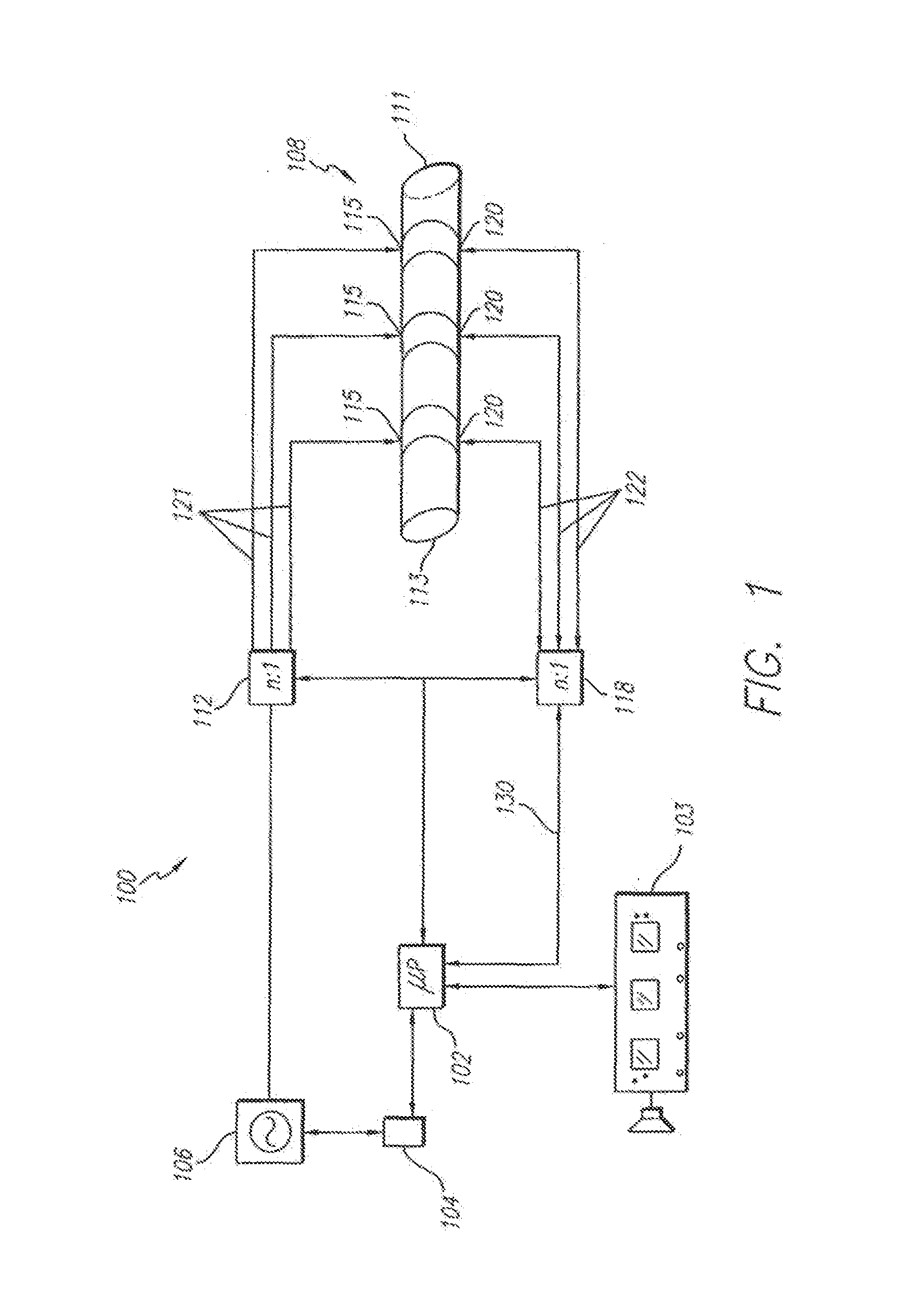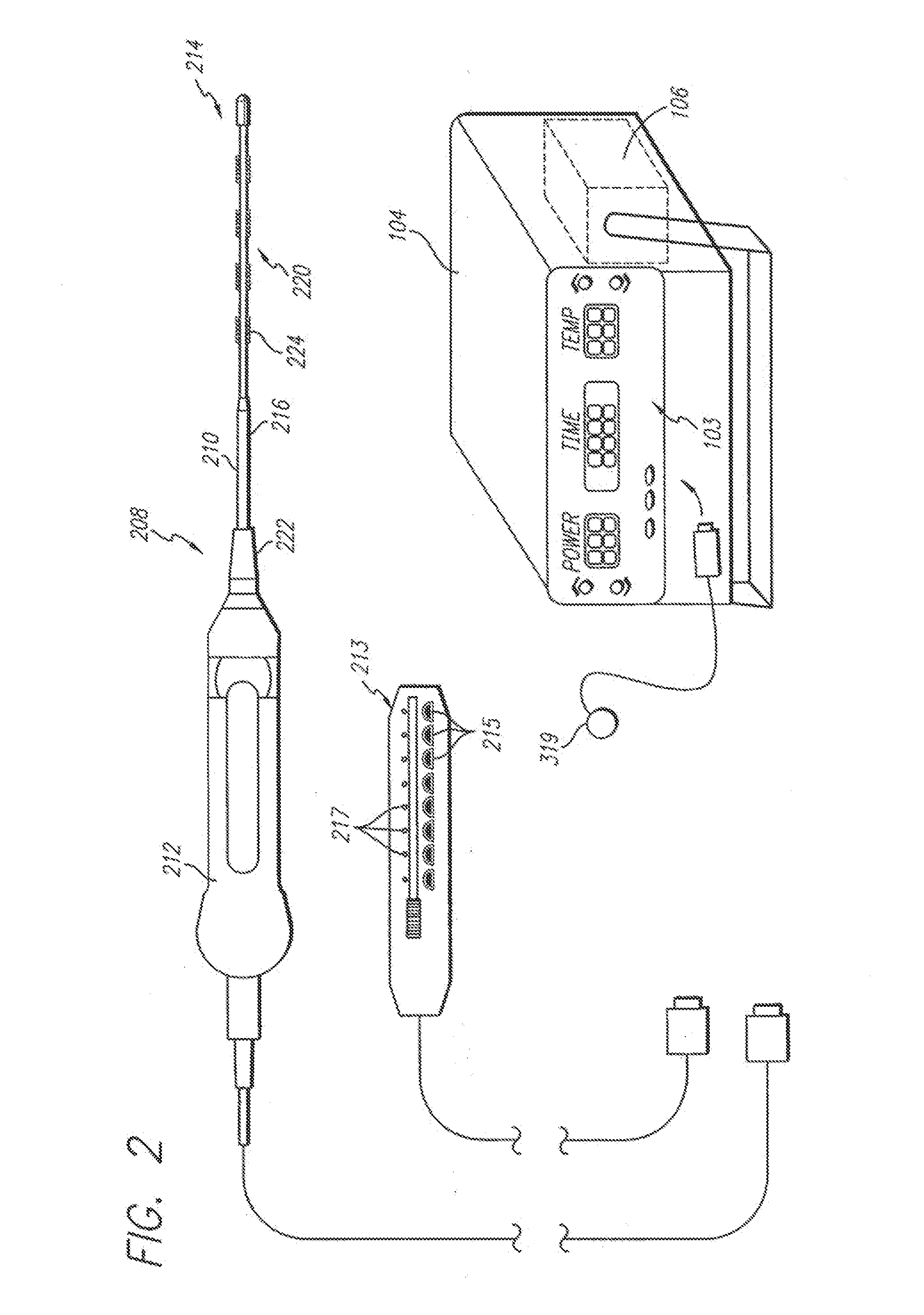Systems and methods for controlling power in an electrosurgical probe
a technology of power control and electrosurgical probe, which is applied in the field of power control systems, can solve the problems of affecting the normal activation of the left and right atria, and suffering consequences
- Summary
- Abstract
- Description
- Claims
- Application Information
AI Technical Summary
Benefits of technology
Problems solved by technology
Method used
Image
Examples
Embodiment Construction
[0042]The following is a detailed description of the best presently known mode of carrying out the invention. This description is not to be taken in a limiting sense, but is made merely for the purpose of illustrating the general principles of the invention.
[0043]The detailed description of the preferred embodiments is organized as follows:
[0044]I. Overview of the System
[0045]II. Electrosurgical Probe
[0046]III. Power Control
[0047]IV. Monitoring Tissue Contact, Coagulation Efficacy and Tissue Type
[0048]V. Variable Temperature Set Point
[0049]VI. User Interface System
[0050]The section titles and overall organization of the present detailed description are for the purpose of convenience only and are not intended to limit the present invention.
I. Overview of the System
[0051]A schematic block circuit diagram of one preferred embodiment of the present invention is shown in FIG. 1. The exemplary system 100 employs a processor 102 to command the overall system. In the preferred embodiment, t...
PUM
 Login to View More
Login to View More Abstract
Description
Claims
Application Information
 Login to View More
Login to View More - R&D
- Intellectual Property
- Life Sciences
- Materials
- Tech Scout
- Unparalleled Data Quality
- Higher Quality Content
- 60% Fewer Hallucinations
Browse by: Latest US Patents, China's latest patents, Technical Efficacy Thesaurus, Application Domain, Technology Topic, Popular Technical Reports.
© 2025 PatSnap. All rights reserved.Legal|Privacy policy|Modern Slavery Act Transparency Statement|Sitemap|About US| Contact US: help@patsnap.com



